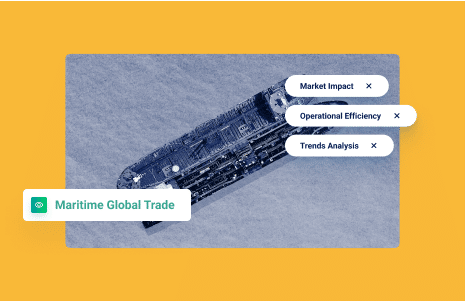Russian Oil Trading: Happening Under the Radar’s Gaze

What’s inside?
Russia’s oil industry continues to feel the pain of sanctions: both official sanctions, as well as “self-sanctions.” A new Reuters article revealed that China’s state refiners are avoiding new Russian oil contracts.
“State-run Sinopec, Asia’s largest refiner, PetroChina and Sinochem have stayed on the sidelines in trading fresh Russian cargoes for May loadings, said the people, who all have knowledge of the matter but spoke on condition of anonymity given the sensitivity of the subject.”
Perhaps in reaction to existing sanctions, and in anticipation of moves like the above, some Russian entities/vessels have started engaging in deceptive shipping practices (DSPs)…
Windward has identified a decrease in ship-to-ship (STS) operations of above nine hours between crude oil tankers departing from Russian ports with other crude oil tankers during the past month. While this decrease was expected in light of recent trading restrictions, Windward’s AI-driven behavioral data clearly indicates that these operations did not stop completely, they just went under the radar…

According to Windward’s AI-driven behavioral data, tankers engaged with Russian vessels in these potential deceptive practices arrived in North America (2), Asia (3) , Russia (3), and Europe (1), and three that are reporting they are headed to China.
The overall estimated amount of Russian crude oil that was already delivered is 4,381,431 barrels of crude oil:
- North America – 1,380,445 barrels of crude oil
- Asia – 2,171,843 barrels of crude oil
- Europe – 829,143 barrels of crude oil
In addition to the oil that was already delivered, there is crude oil underway to China according to the “reported destination” – 6,487,107 barrels of crude oil.
One of the crude oil tankers Windward found is particularly interesting.
On March 31, a laden crude oil tanker (brown tab in the image below) with an estimated volume of 700,000 barrels of crude oil, arrived at Hawaii from South Korea. Prior to its departure, it was engaged in a ship-to-ship operation with another crude oil tanker. Following the meeting, the first crude oil tanker updated its reported draft, indicating a loading activity was occurring.

While this may sound like regular crude oil tanker behavior, if we take a closer look at the data, we can see that before arriving at South Korea, the oil tanker called port in De Kastri Russia – its usual port of operation.

So while the new restrictions are changing vessel behaviors, trade flows and the maritime landscape in general, it seems like some companies are maintaining business as usual, by concealing their actions and trying to keep regulatory bodies, the media, etc., in the dark.
Windward will continue monitoring this quickly evolving situation, to provide players across the maritime ecosystem with the most up-to-date information possible.








